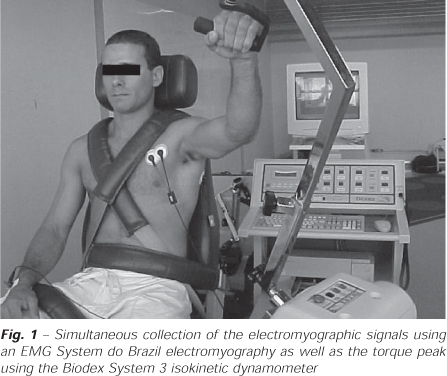The sportive training causes neuromuscular adaptations and metabolic alterations aiming the competition performance. In judo competitions, the number of fights to what athletes are submitted, as well as their respective endurance and intervals are randomized, and these factors may influence the aimed training performance. This study investigated the hypothesis that different fight endurances, 90s, 180s, and 300s could influence the enzymatic and muscular electrical activity, as well as the torque peak production. Before and after each fighting, a blood sampling was collected from each athlete. After and before each fight, they performed five dynamic contractions (90º/s) using an isokinetic Dynamometer (Biodex System 3). Simultaneously, it was recorded the electromyographic signal of the agonist, antagonist and synergistic muscles of the movement assessed. It was observed no alterations in the torque. The AST and ALT enzymes presented an increasing activity in the 90 sec. (p = 0.0033/p = 0.00059), 180 sec. (p = 0.0044/p = 0.0033), and in the 300 sec. (p = 0.0044/p = 0.0033) fights. It was verified an increase (p = 0.0180) in the CK activity after the 300 sec. fight. LDH decreased after the 90 sec. fight (p = 0.0392). Upon the intermuscular analysis, it was observed an increase in the electromyographic signal of the agonist muscle after the 90 sec. fight (p = 0.005), an increase of the antagonist muscle in the 180 sec. fight (p = 0.0129), and a decrease (p = 0.0137) in the activity of the agonist muscle in the 300 sec. fight. It was observed that the strength in the 300 sec. fight might reduced the injuries in the muscular tissue characterized by a raise in the plasmatic CK, although the injury was not sufficient to detect the fatigue through the isokinetic dynamometry. It can be concluded that the proposed protocol was sufficient to the enzymatic and electromyographic alteration, suggesting metabolic and neural adaptations from stress caused by the judo fights.
Electromyography; Enzymes; Fatigue; Torque; Financial support: UNIVAP








